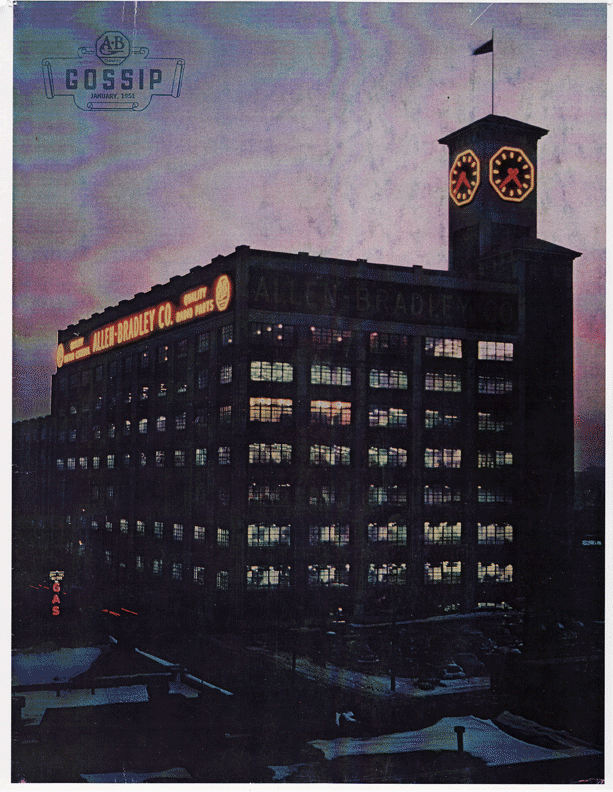The following is from The Collection of Mrs. Harry Lynde Bradley published in 1968 by what was then called the Milwaukee Art Center: “I don’t believe it is excessive to state that while the Art Center has had many other generous patrons, none of them would be offended by the note that Mrs. Bradley’s gifts have been the single most important factor in attaining the important status which our collection enjoys today…As Frederick Layton gave us our original impetus, the Bradleys have provided our modern history.”
Family members have quietly supported many other causes over the years, including the Milwaukee Boys Club, one of Harry’s favorites.
The Allen-Bradley magnanimity was crowned by the spectacular architectural gifts: the Bradley Center; Harry Bradley Technology and Trade School; and the Pettit National Ice Center. The first two were paid for by Jane Pettit and her third husband, Lloyd, and the last received $6 million from the couple. Another $13 million went to help build the Calatrava addition to the Milwaukee Art Museum. Jane, who was adopted by Harry, was the daughter of Peg from an earlier marriage.
Jane Pettit’s fondness for the octagon was underscored by the number that were built into the Bradley Center. “There are 213 in the facility and on the grounds, including the shape of the building itself, which is an elongated octagon,” recalled retired Rockwell Automation executive Ted Hutton who sent a photographer to do a count.
Beginning in 1951, the octagon has also helped citizens keep time. That’s when the first Allen-Bradley tower clock was dedicated. It featured four faces, all octagonal, and could not have been called the “Polish Moon,” the affectionate name sometimes applied to the current timekeeper.
The “Polish Black Hole” would have been more appropriate because the clocks featured red, neon hands that swung around black faces and pointed to yellow, neon hash marks. The Milwaukee Sentinel article about the dedication said it would be “the largest four-sided clock” in the United States It also mentioned that “timing is by IMB,” a typo that probably indicates how little known IBM was at the time.
My interest in the octagon began in 1982 when I left the Wisconsin Telephone Company to take a position at the Allen-Bradley Company as a creative specialist.
One of my responsibilities was writing scripts for a new information vehicle called the Video Magazine. It was produced on a quarterly basis in-house and disseminated mainly to Allen-Bradley salespeople and distributor personnel.
To stimulate interest and encourage viewership, it struck me that a good story would be a description of how Allen-Bradley came to choose the octagon as its logo. Bob Linder, the gentleman I reported to and his manager, Ed Allen, agreed. I figured there would be a clear-cut explanation, given the button-down rationality that characterized the company, its products and people. I guessed the octagonal shape might signify something in electrical schematics.
My video department colleagues didn’t know the octagon’s history, so I began asking others around the company but kept coming up empty. It had no role in drawings, electrical or otherwise I soon learned. Eventually I talked with Marion Wojtkowski who was the editor of a popular Allen-Bradley employee magazine called Contact. She didn’t know either but said she would look into it.
At that time, in the early 1980s, Allen-Bradley was still a privately held enterprise with a distinctly old-fashioned feel. For example, not far from the comfortable and colorful cafeteria, the company had a gymnasium that was the scene of after-work employee basketball games and other physical activities. The gym included a stage where now and then the Allen-Bradley employee band would perform during the lunch hour.
Jane Pettit Anecdote
Retired Rockwell Automation executive Ted Hutton tells endless stories
about the company and its people in his folksy way and is a
delight to interview. One of his Allen-Bradley tales has to do with
storied A-Ber Jane Pettit, adopted daughter of company co-founder Harry
Bradley. “Jane worked for Allen-Bradley during World War II,” Hutton
recalled, “and she sometimes served as the switchboard operator. People
who worked with her said that she often answered incoming calls with
a cheerful, ‘A-B, what’ll it be!?’”

The original Allen-Bradley four-sided
clock was dedicated in 1951.
Courtesy of Rockwell Automation, Inc.